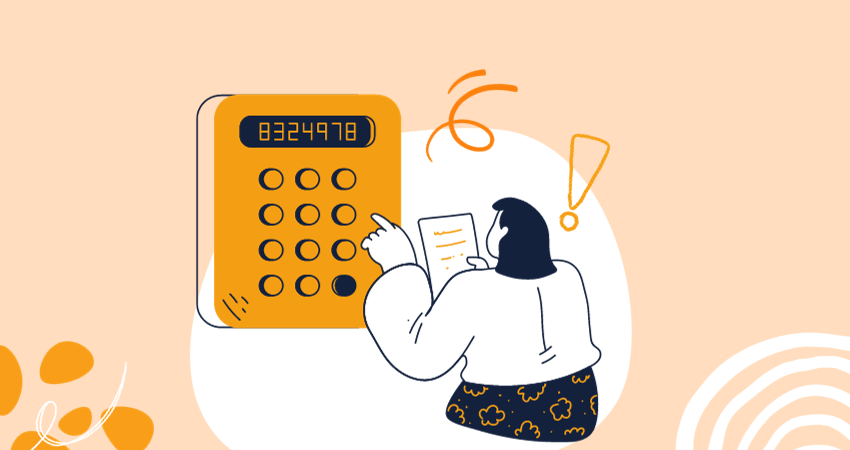As a business owner, understanding Singapore's tax system is crucial for managing your finances effectively. This understanding becomes particularly vital if your business frequently engages with overseas freelancers. In such scenarios, you need to be aware of the withholding tax requirements.
Withholding tax in Singapore applies to certain types of payments made to non-resident companies and individuals. When you engage freelancers from abroad, it's essential to understand the specific circumstances under which withholding tax is applicable and at what rates. This knowledge ensures that your business remains compliant with tax laws, avoiding any potential legal and financial complications.
Thus, in this blog, we're going to tackle withholding tax – an important piece of the tax jigsaw. Consider this your handy guide to understanding withholding tax in Singapore. We'll unfold its implications for different types of payments and equip you with the know-how to handle withholding tax issues smoothly. So, let's jump in and get you up to speed, ensuring you're on top of your tax game.
What is Withholding Tax?
Withholding tax is a mechanism used by the Singapore government to collect taxes from non-resident companies that earn income in Singapore. It is a form of advance tax payment where the payer withholds a certain percentage of the payment and remits it to the Inland Revenue Authority of Singapore (IRAS) as taxes.
Who Needs to Pay Withholding Tax?
Not all payments are subject to the tax. It is only applicable when there are payments made to non-residents. Non-residents are companies that are not tax residents of Singapore. The tax residency of a company is determined by the place where the business is controlled and managed, rather than its place of incorporation.
Who is a Non-Resident Company?
In Singapore, a company's tax residency depends on where it controls and manages its business. A company is considered a non-resident for tax purposes if it exercises control and management outside of Singapore. It's crucial to understand that a company's place of incorporation does not necessarily dictate its tax residency.
Curious to learn more about the tax residence status of a company? Check out our blog and discover what it means for your business.
Types of Payment and Withholding Tax Rates Including Examples
- Fees, Commissions, and Interest Payments: When a company in Singapore pays fees, commissions, or interest to someone outside Singapore, they have to withhold 15% tax from these payments. For example, if a Singapore company pays interest to a foreign lender, 15% of that interest is withheld for tax.
- Use of Moveable Property Payments: If a company in Singapore pays for using things like intellectual property (like patents or trademarks) from someone outside Singapore, they need to withhold 10% tax. So, if a company pays for using a foreign company's intellectual property, 10% of that payment is for tax.
- Payments for Knowledge or Information: When a company in Singapore pays for special knowledge or information from a foreign expert, they also need to withhold 10% tax. This happens, for example, when a company pays a foreign consultant for their expertise.
- Management Fees Payments: If a Singapore company pays management fees to a company outside Singapore, tax rules are a bit different. The foreign company can ask for a tax deduction for the costs they had to provide the service. They need to show their accounts and tax details to the tax authorities in Singapore. If they've paid more tax than needed, they can get a refund.
How is Withholding Tax Different from Traditional Income Tax?
The withholding tax system in Singapore differs from traditional income tax in terms of who pays the tax. In traditional income tax, the tax liability falls on the income recipient, who is responsible for filing and paying taxes. However, in the case of withholding tax, the tax is collected from the source of the income, which means the payer is responsible for withholding a portion of the payment and remitting it as withholding tax.
The tax is only applicable to non-residents, while residents are subject to income tax for all their income. This distinction ensures that non-residents contribute their fair share of taxes for the income they earn in Singapore.
Basic WHT applicability calculator
You can use the calculator to determine whether WHT is applicable when you make a payment to a non-resident.
How to File and Pay Withholding Taxes in Singapore
Filing and paying withholding taxes in Singapore is a straightforward process. Here's a step-by-step guide:
Step 1:
Use Singapore Corporate Access (Corppass): File and pay for withholding tax in Singapore using Singapore Corporate Access (Corppass), an online platform that provides secure access to government e-services.
Step 2:
Fill and Submit the Withholding Tax Form: Use Singpass to log in to mytax.iras.gov.sg for “Business Tax or Business Client”, whichever is applicable, to file WHT for the company. There are 2 ways to file WHT:
If you are filing a few records, you can file via S45 Online filing. View S45 online filing guide.
If you are filing many records, it will be faster to submit your records in an excel-based file (S45 ODE Import Template via S45 Offline Data-Entry (ODE) application. View S45 ODE application guide.
Complete the withholding tax form provided by IRAS. The form requires details such as the payer's information, payee's information, nature of payment, and payment amount.
Step 3:
Review and Confirm: Review the information you entered and ensure its accuracy. Once you are satisfied, submit the form electronically.
Step 4:
View Acknowledgement Page: After submitting the form, you will see an acknowledgement page. Take a screenshot or print this page for your records.
Step 5:
Make Payment: Pay the withholding tax amount to IRAS by the due date. The due date for filing and paying withholding tax is the 15th of the second month from the date of payment to the non-resident. For example, if you made a payment on 29th January 2024, you must file and pay withholding tax by 15th February 2024.
It's crucial for you to meet the filing and payment deadlines to avoid penalties. If you, after deducting tax withheld from a payment to a non-resident, fail to file and pay the tax withheld to IRAS by the due date, it's an offence under S45(5) of the Income Tax Act. In such a case, you would be guilty of an offence and, upon conviction, would have to pay a penalty equal to three times the amount of tax deducted. Additionally, you could also face a fine of up to $10,000 or imprisonment for up to 3 years, or both.
Navigating Withholding Tax with Grof’s Help
We hope this guide has shed light on the withholding tax system in Singapore and enhanced your understanding. Remember, getting a handle on withholding tax is vital, especially if your company deals with non-resident businesses.
If you’re unsure about withholding tax, consider approaching our accounting experts at Grof. We offer clear, transparent pricing plans tailored to your needs. Remember, navigating withholding tax is just a part of ensuring your business's financial health and compliance.






